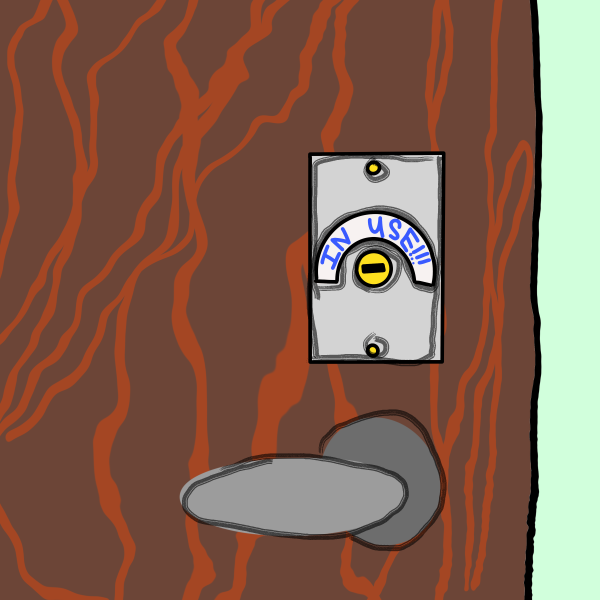Up in the air
An in-depth exploration of the no smoking policy for Hamline Campus.
Passing by the overhang next to Giddens Alumni Learning Center (GLC) to get to my next class, I, like many others, did anything to avoid the vice that gripped the throat of anyone in the area. In the winter months, students and staff alike would congregate under the overhang and smoke. The smoke would create a vortex, shooting smoke out both ends of the overhang and towards me as I coughed and rushed to my next class.
I am pickier than most. As a singer, I work very hard to keep my lungs clear of any toxins. As a student with asthma, I would enter wheezing and coughing fits from passing this area. And I was clearly not the only student that dealt with this problem.
In the 2016 school year a number of students and faculty brought this issue to Hamline University President Fayneese Miller, many of them suffering from the same issues I dealt with. Miller took these stories to heart with the understanding that this is a detriment to individuals and to the college at large. Therefore, she began work on a campus-wide policy which will implement a ban on all tobacco products and smoking, a goal she has had since she became president. To help with this transition The Association for Nonsmokers – Minnesota is working pro-bono with a committee of staff and students.
Miller shared the concerns that were brought to her in a private interview with me. “If we are going to be a campus that focuses on health and well-being, then we have to consider the impact on those who smoke and those who don’t.” Dr. Miller pointed out the severe health problems that come with smoking and being around those who smoke.
She observed that people frequently violate the law which prevents people from smoking near a building. She shared that on multiple occasions ashtrays have been moved from appropriate locations on campus to the GLC underpass I try so hard to avoid. She explained that even though the smoking is not occurring next to a door, the smoke is still seeping in through windows and being picked up in the ventilation system. I cringed at this. Smoke was being pumped through our buildings!
Miller shared her concerns about the amount of cigarette butts that end up thrown on the sidewalk and into flower beds. She lamented that it was disrespectful of the hard work done every day by Hamline grounds workers. “It’s about respecting property, space, and other people,” explained President Miller, a statement reflected by students on campus. “Smoking is your choice,” Dr. Miller conceded. “You have the right to smoke.” Still, Miller and the committee are putting in place adequate resources to assist students with quitting the addiction of smoking.
I caught up with a smoking student on campus. She shared with me that she only smokes e-cigarettes because they give her a feeling of control because she can choose exactly how much nicotine juice she intakes every day – though she realizes they are still bad for her.
This student told me that she works very hard to not smoke near buildings or when she is close to other people, as she recognizes that students like myself don’t want to be around that and she wants to make everyone comfortable. “My personal opinion is that [a smoke free campus] isn’t necessary,” she shared, “as long as people are respectful of others, it should be allowed.”
She had some great points that made me begin to look at other aspects of this story. Did we really need a smoking ban, or just more respectful students?
A student from the University of Minnesota Minneapolis campus shared his experience with the UM smoke free campus compared to the Hamline campus, where he spends time with friends. As a non-smoker he told me he had never truly thought about this before. He doesn’t mind people smoking on campus as long as they are respectful and clean up after themselves and don’t smoke near him. He did point out that it is nice to walk to class without worrying that you will be in a cloud of smoke, and shared how uncomfortable it would make him to be dodging smoke clouds all day.
During an interview with junior Gunnar Aas, Founder and former president of Students For Sensible Drug Policy (SSDP), I dove into the depths of what this ban would truly mean. Aas brought up the questions “What will this look like? How will it work? Who will enforce it?” These are questions all of us, as students, are wondering. How will this affect us and change our campus?
Aas made the particularly scary prediction that if the ashtrays are removed, smoking litter will increase on campus and at the houses just off campus. How would this affect the people who live so close to the school, to constantly find students standing in front of their house to smoke?
Another question begs to be answered: is the administration overstepping their bounds? “I see it as forced addiction treatment,” said Aas, with a hint of melancholy in his voice. He shared that forced treatment is ineffective, leads to a high rate of relapse, and can create animosity between the person being treated and the people doing the treating.
Aas explained his fears to me, “In places where tobacco isn’t allowed, people turn to worse substances.” He brought up other negative coping mechanisms to deal with stress and this resonated with me as someone who has dealt with negative coping in the past.
However, I was led to question, what substances are really worse than tobacco? According to Harvard Health, cigarettes are the only legal product in the United States that, when used as directed, will kill you. They kill nearly 500,000 people a year, more than HIV, heroine, methamphetimines, cocaine, alcohol, motor vehicles, and firearms all together. These deaths are preventable; just don’t smoke a cigarette.
Aas posed the ever-so-frequently-mentioned point that, “E-cigarettes are a harm reduction system” and help many people quit smoking for good. However, according to a comprehensive Harvard Health article, research is conflicted on this. While a few studies have shown e-cigarettes helping patients stop smoking, even more have shown it may make the addiction worse. And as for mitigating the harm? It seems to be a trade off. Though electronic cigarettes lack the tar that traditional cigarettes are potent in, they contain many other carcinogens that researchers known even less about.
In my final interview with President Miller, we discussed the details and concerns that came to my attention during my exploration. When the inevitability of student backlash was brought up, Dr. Miller took a moment to sit and think. I could almost see the gears turning in her head.
“This isn’t about denying people their rights, though some may see it as that,” Miller explained. “This is about doing the right thing for [the] campus as a whole. This is about making health and well-being as important as academic excellence, inclusivity, and social justice.”
She sat back in her chair, silent, and continued to think. I tried to move to my next question, but she stopped me, stating that this concern was really bothering her.
“I don’t mean to be flip,” she laughed a bit, “but life isn’t always what we want it to be.” This may have been the most true statement I’ve heard all semester. There was no malice in her face, just a concerned, warm light in her eyes. “I am focusing on life deliberately because I want all members of this community to have long lives.”
She shared that, at the end of the day, all she wants is for students to feel good and safe at Hamline. “As a mother, this concerns me, because I see every student at Hamline as mine.” And I swear I saw tears well in the president’s eyes when she spoke. “I want them to choose life.”





